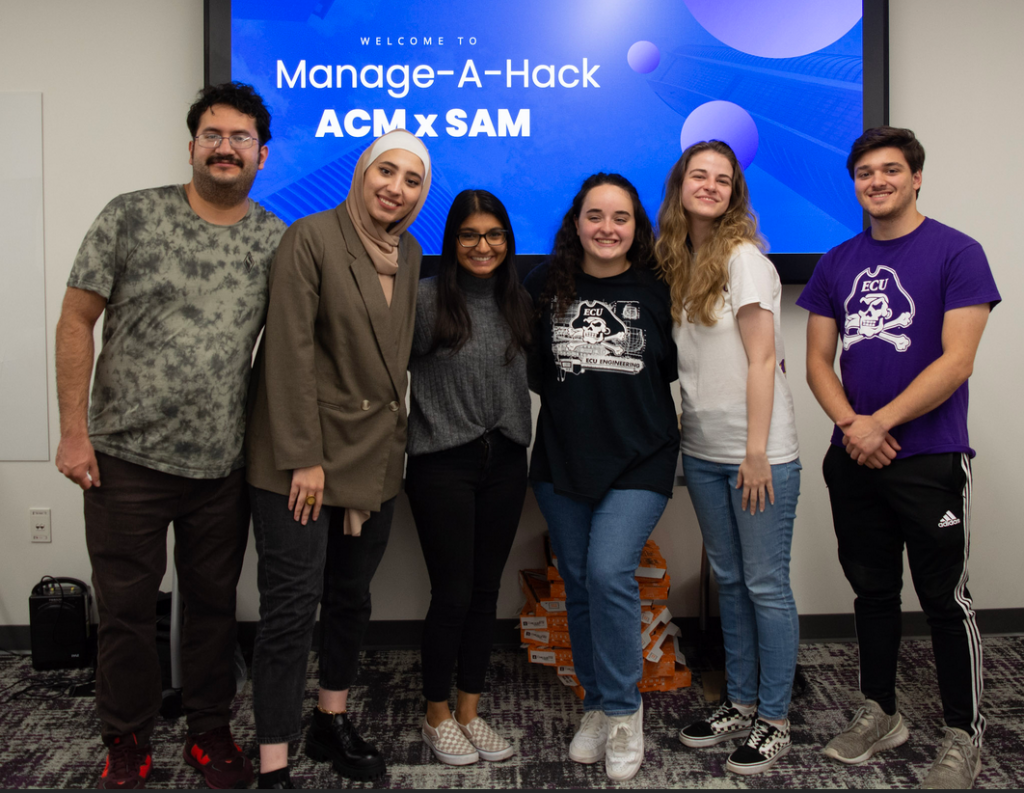November 30, 2022
“Manage-a-Hack” Event Brings Business and Computer Science Students Together
ECU’s Society for the Advancement of Management (SAM) and Association for Computing Machinery (ACM) recently teamed up to host their first-ever joint mini-hackathon, fittingly named “Manage-a-Hack.” The event brought business and computer science students together to form five interdisciplinary teams, each of which were then tasked with producing a startup idea, curating a business proposal, and developing a working prototype for presentation to a panel of judges. The five-hour event, hosted in the Isley Innovation Hub, aimed to close the gap between business and technology by introducing students to problem-solving approaches through the lens of a complementary discipline. Further, the event showcased how the fields of business and computer science can collaborate to complete projects.
Dr. Cody Logan Chullen, Associate Dean for Academic Quality in the College of Business (COB) and Dr. Nic Herndon, Graduate Program Director for Computer Science in the College of Engineering and Technology (CET), served as judges for the event. They listened to an array of excellent presentations including ideas for utilizing business and technology to increase rural access to the internet, to increase campus safety, and to promote health and well-being in Eastern North Carolina, among others. Prizes were awarded for best overall presentation, best business pitch, and best programming.
“Co-curricular activities such as ‘Manage-a-Hack’ are an important extension of the formal classroom learning experiences we offer our students. These activities positively impact our students by stimulating their creativity, improving their communication, teamwork, and leadership skills, and developing their interests and talents,” said Chullen. “As part of our new strategic plan, we seek to increase the number of our graduates with significant co-curricular experiences. Bridging the classroom with these experiences fulfills the mission of ECU to foster student success and regional transformation.”
- Categories:
- Uncategorized

